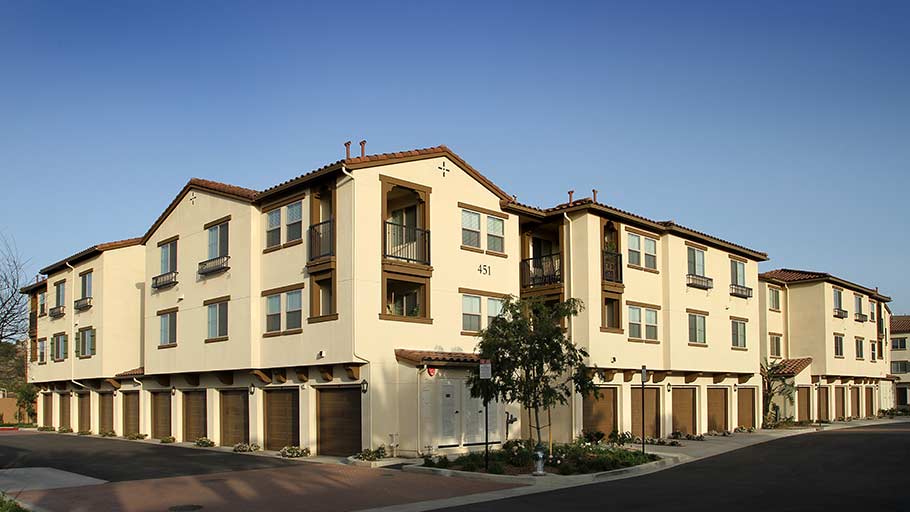The state of California leads the way in implementing a climate change strategy that cuts the collective environmental footprint to 40% below 1990 levels by 2030. The plan includes all layers of government and industry, including housing development.
How does this effect housing development?
Affordable housing is most effective when located close to employment centers. Transit-oriented design (TOD) promotes sustainable practices, reducing household transportation costs with shorter commutes. TOD properties can help reduce the need for vehicles in areas with mass transportation nearby. In addition, residents in affordable housing communities own fewer vehicles.
Recognizing this trend, the California Tax Credit Allocation Committee (CTCAC) – which provides the majority of funding for the creation of affordable housing – has implemented policies to decrease greenhouse gas emissions by favoring TOD development and reduced parking requirements.
How are parking requirements determined?
Onsite parking is provided to residents based on state and local municipal parking codes for each type of community (multifamily vs. single-resident studios). Other factors that determine the number of parking spaces include the overall size of the property as well as concessions for TOD design, concessions under state density bonus law, and/or stipulations necessitated by public and private investors in the development. Often, cities have measures that support a reduction in onsite parking. These include policies related to the goals of increasing the use of public transit, limiting increases in vehicular traffic, improving air quality, limiting fuel consumption, and improving conditions for pedestrians in the areas.
Do residents living in affordable housing need a lot of parking?
According to Jamboree’s Annual Resident Satisfaction Survey in 2018 – a survey sampling of 1,729 residents across 86 of Jamboree’s communities – the percentage of residents who own cars are as follows:
- At our senior properties, 80% of residents own a vehicle, of whom 65% own one car and 13% own two cars.
- At our family properties, 90% of residents own a vehicle, of whom 44% own one car and 35% own two cars.
- At our Permanent Supportive Housing properties, just 12% of residents in studios own a vehicle while 58% of residents at multifamily sites own a vehicle.
Does parking become an issue in the surrounding neighborhood?
City partners and developers such as Jamboree work to create solutions aimed at mitigating any potential traffic and parking issues, including parking management plans. In addition, affordable housing communities include measures that encourage alternatives modes of transportation – such as car sharing, free bus passes, bicycle storage, and complementary shuttles.
